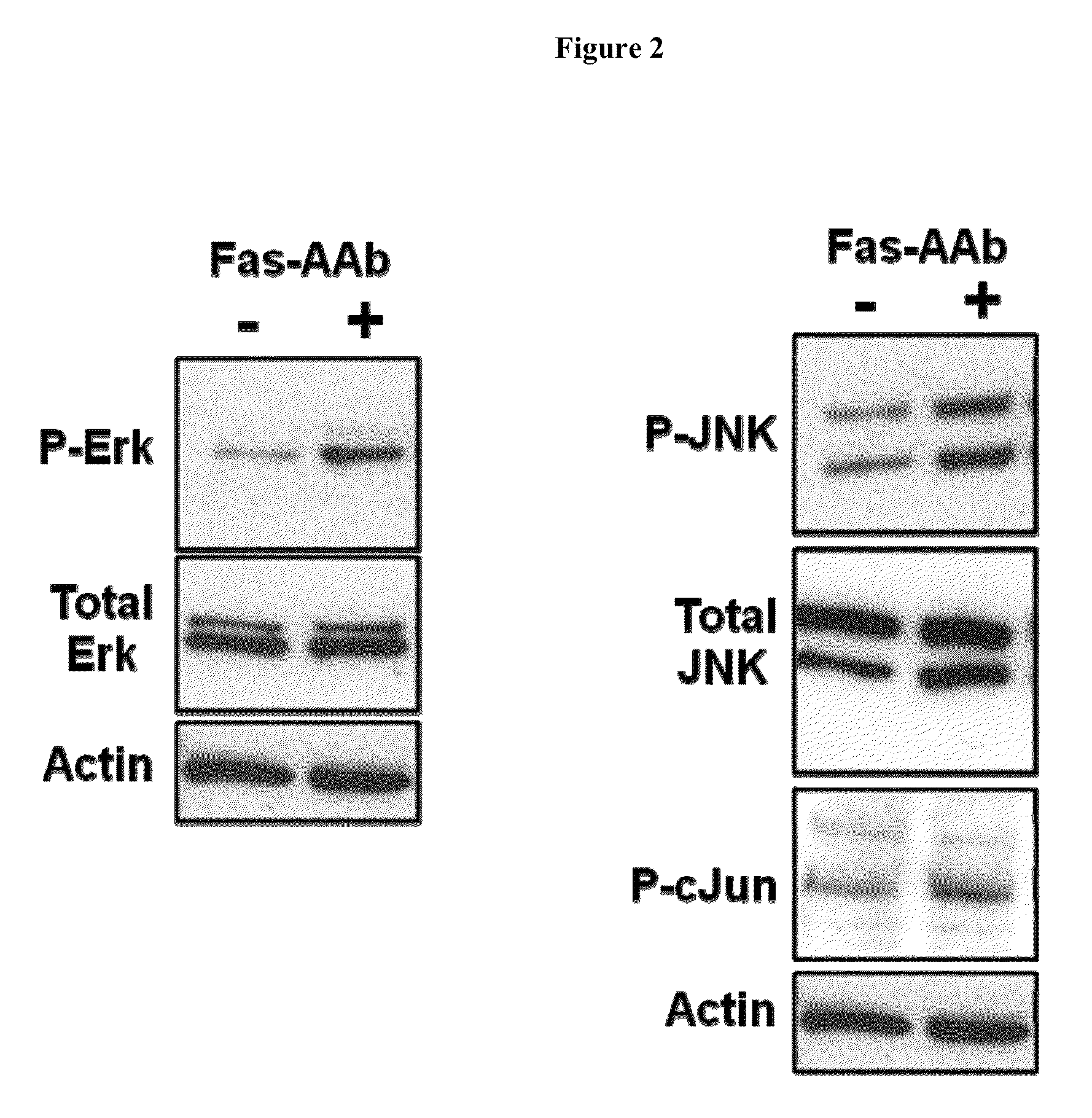Methods of inhibiting photoreceptor apoptosis by eliciting the Faim2 antiapoptotic pathway
a photoreceptor and anti-apoptosis technology, applied in the field of compositions and methods to prevent apoptosis, can solve the problems of lack of molecular specificity of therapies
- Summary
- Abstract
- Description
- Claims
- Application Information
AI Technical Summary
Benefits of technology
Problems solved by technology
Method used
Image
Examples
example 1
Compositions and Methods
Experimental Model of Retinal Detachment
[0056]All experiments were conducted in accordance with the ARVO Statement for the Use of Animals in Ophthalmic and Vision Research and the guidelines established by the University Committee on Use and Care of Animals of the University of Michigan. Detachments were created in adult male Brown-Norway rats (300-400 g) (Charles River Laboratories, Wilmington, Mass.) (Zacks et al. Invest Ophthalmol Vis Sci 2003; 44:1262-1267; herein incorporated by reference in its entirety). Rodents were anesthetized with a 50:50 mix of ketamine and xylazine, and pupils were dilated with topical phenylephrine (2.5%) and tropicamide (1%). A 20-gauge microvitreoretinal blade was used to create a sclerotomy 2 mm posterior to the limbus, carefully avoiding lens damage. A Glaser subretinal injector (32-gauge tip; BD Ophthalmic Systems, Franklin Lakes, N.J.) was introduced through the sclerotomy into the vitreous cavity and then through a periph...
example 2
Retinal Detachment Induces Faim2 Expression
[0062]Microarray analysis of genes expressed upon experimental retinal detachment identified Faim2 gene as a transcript that is induced at 24 hours post retina-RPE separation. To supplement the microarray data, the level of Faim2 protein in detached rat retinas was evaluated. Levels of Faim2 started to increase by 8 hours of retinal detachment (SEE FIG. 1A), and remained elevated after seven days. Faim2 expression data was consistent with microarray data, both demonstrating that retinal detachment leads to increased levels of Faim2.
example 3
Fas Signaling Leads to Elevated Faim2 Expression in 661W Cells
[0063]Experiments were conducted during development of embodiments of the present invention to determine whether the Faim2 increase in the in vivo model of experimental retinal detachment could be reproduced using our in vitro model of Fas-mediated photoreceptor apoptosis. The 661W cell line is a photoreceptor line that has been immortalized by the expression of SV40-T antigen under control of the human interphotoreceptor retinol-binding protein (IRBP) promoter (al-Ubaidi et al. J Cell Biol 1992; 119:1681-1687; herein incorporated by reference in its entirety). 661W cells express cone photoreceptor markers, including blue and green cone pigments, transducin, and cone arrestin (Tan et al. Investigative ophthalmology &visual science 2004; 45:764-768; herein incorporated by reference in its entirety). Treatment of 661W cells with an antibody that activates the Fas-receptor (Fas-activating antibody or Fas-AAb) leads to caspas...
PUM
| Property | Measurement | Unit |
|---|---|---|
| pH | aaaaa | aaaaa |
| full-length | aaaaa | aaaaa |
| length | aaaaa | aaaaa |
Abstract
Description
Claims
Application Information
 Login to View More
Login to View More - R&D
- Intellectual Property
- Life Sciences
- Materials
- Tech Scout
- Unparalleled Data Quality
- Higher Quality Content
- 60% Fewer Hallucinations
Browse by: Latest US Patents, China's latest patents, Technical Efficacy Thesaurus, Application Domain, Technology Topic, Popular Technical Reports.
© 2025 PatSnap. All rights reserved.Legal|Privacy policy|Modern Slavery Act Transparency Statement|Sitemap|About US| Contact US: help@patsnap.com



